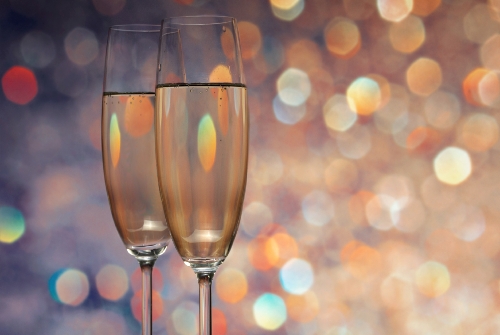Those with beer budgets and champagne tastes can drink up

Don’t feel inadequate if you’re a little flummoxed by all-over-the-place prices for Champagne and sparkling wines. It can happen to the best of us, it seems; just ask Ken Shey, sommelier at the Range Steakhouse at Harrah’s Las Vegas.
“We all know what the euro is doing to Champagne,” Shey said.
Four or five weeks ago, his supplier quoted him a price of $60 per bottle for Louis Roederer Brut, which for some time had been running in the $25 to $35 range. Shey passed.
“Yesterday, I got a call that I can buy it for $22 a bottle,” Shey said. “They didn’t want to give the reasons why. They just said they had worked out a deal.”
At that price, he said, retailers would be able to offer it at about $30 to $32, which he called a “fantastic” price for the quality.
But the ups and downs aren’t the only all-over-the-place aspect of the pricing. You can get a bottle in the supermarket for less than $10 — sometimes way less. You could, if you had the wherewithal, also spend many hundreds of times that for high-profile celebrity brands such as Dom and Cristal, the club-scene “make-it-rain” bottles. And really, what’s the difference?
Well, some of the differences are meaningful, some not. The first thing to know is that Champagne is, technically, only made in the Champagne region of France. If it’s made in California or Washington or anywhere else, it is, to be correct, sparkling wine.
Champagne is by definition best, right?
Well (again), that depends on your palate and your pocketbook. But here’s one way to look at it: A sparkling wine such as Cook’s, at less than $6 retail, is a good value in the bottom range, said Glenn Morrison, senior vice president and general manager
of the wine division at Southern Wine & Spirits of Nevada. But in that case, Morrison said, the winemaker “buys grapes from anywhere and everywhere throughout California.”
In the case of a tête de cuvée — the best from a Champagne house — the grapes come from specific vineyard plots within the Champagne region, the vineyards often owned by the winemaker.
“They’re somewhat limited, extremely high-quality products,” Morrison said.
“With the Champagne houses, it has more to do with the amount of grand cru,” the best-quality grapes, Shey agreed. “That’s about 30 percent of the Champagne produced. They’re doggone costly.”
And producers “know that they can get what they ask for them, more often than not,” he said.
“Champagne drinkers know they’re going to have to pay a touch more.”
Then again …
Some of the pricing, said Patrick Trundle, beverage director for Andre’s at the Monte Carlo and Alize at the Palms, “has a lot to do with ego, competition between Champagne houses on who can have the most expensive and most elaborate bottles.”
“A lot of what you’re paying for is hand-blown glass and ornately hand-painted labels versus the juice that goes inside the bottles,” Trundle said.
“With others, you pay for marketing,” said Peter Brattander, director of beverage for The Mirage.
Often, better values can be found among Champagnes from the smaller houses, he added.
Brattander said he would expect to pay a minimum of $25 to $50, “if you wanted something drinkable.”
There’s a lot available in that range, he said.
Among sparkling wines, he recommended: Schramsberg blanc de blanc (about $25), Domaine Chandon and Domaine Carneros (upper $20s), from California.
“Basically, they’re Champagne transported into Napa,” he said. “The production is almost the same, but it’s made on American soil.”
“Once you say not Champagne but sparkling wine, it blows the field wide open,” said Thomas Burke, master sommelier with Wirtz Beverage Group of Nevada. “There’s a ton of stuff out there.”
Two of them disagreed somewhat about prosecco, sparkling wine from Italy. Burke said it’s “inexpensive and fun to drink,” with Bisol Jeio priced at $15 or $16.
“Prosecco’s not meant to be aged and get more complex,” he said. “It’s supposed to be just fun to drink out of the gate.”
“I wish prosecco was more consistent,” Shey said. “It’s such a minefield when it comes to prosecco. You taste a half-decently good one, and the next four are crap.”
American sparklers tend to be more consistent, they agreed.
“I enjoy a bottle of American sparkling at any time,” Brattander said. “It’s a good product. I like that you can taste France, but it’s only a stone’s throw from Las Vegas.”
Contact reporter Heidi Knapp Rinella at hrinella@reviewjournal.com or 702-383-0474.